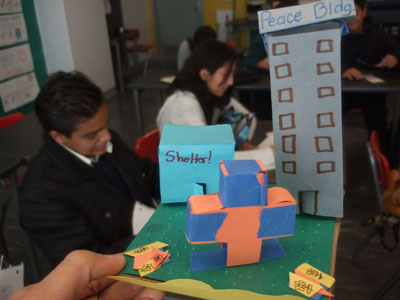Design based learning
Design based learning starts with the end in mind. The theory behind Design Based Learning is that students use 3-D models to solve an everyday problem tied to the curriculum. History teachers could ask their students to design a city that represents reform. Teachers also set criteria for the 3-D model that are in line with the state standards. Students build their model and explain why they put certain elements in their city. The next step is that teachers teach a lesson related to the theme. For example, the theme of recovery could be tied to the Second Great Awakening, a reform movement that led to the establishment of schools, medical rehabilitation centers, and orphanages as a means to reform society in the 1800's. The last step is that students use the new information they learned to rebuild a model that reflects the concepts they learned in the guided lesson.
The Product
Students make 3-D models of cities that reflect the reforms during the Second Great Awakening.

The Process
- Backwards Planning Chart: Students use the Design Based Learning Process to demonstrate learning
- Mapping the Standards template: Teachers can use this chart to connect standards, the NBS model, and guided lessons.
- Example Lesson Plan on the Second Great Awakening using the DBL model
- NBS Student directions and rubric for the Second Great Awakening
- A teacher's reflection on the process
The Pedagogy
Design-Based Learning was developed by Doreen Nelson, a professor at Art Center College of Design and California State Polytechnic University, Pomona. Her findings suggest that kinesthetic problem solving helps the brain acquire, retain, and synthesize information in practical ways. To learn more about Design Based Learning, visit the Art Center of College and Design, which regularly holds summer institutes for teachers.


 Previous:
RESEARCH POWERPOINTS
Previous:
RESEARCH POWERPOINTS


